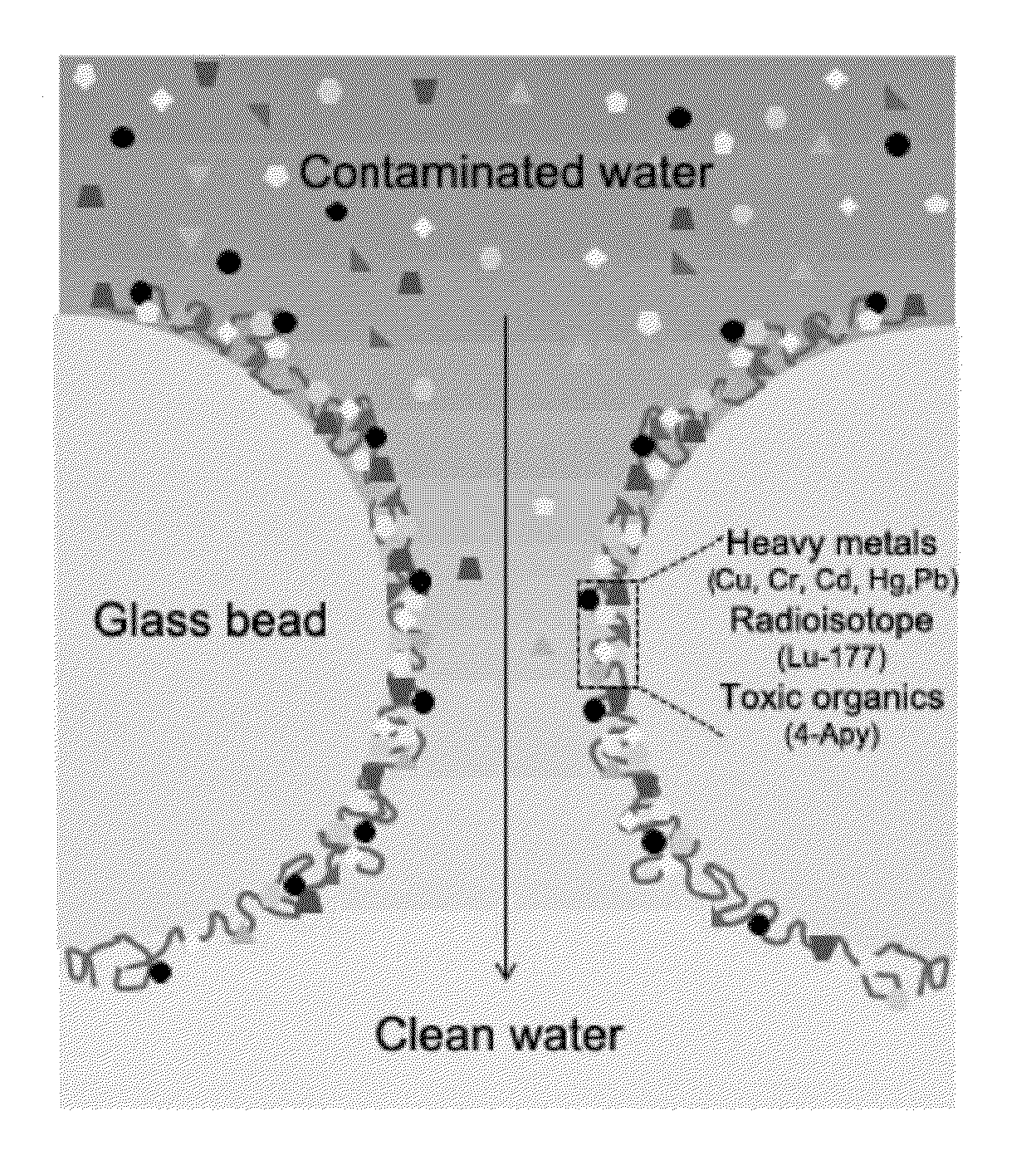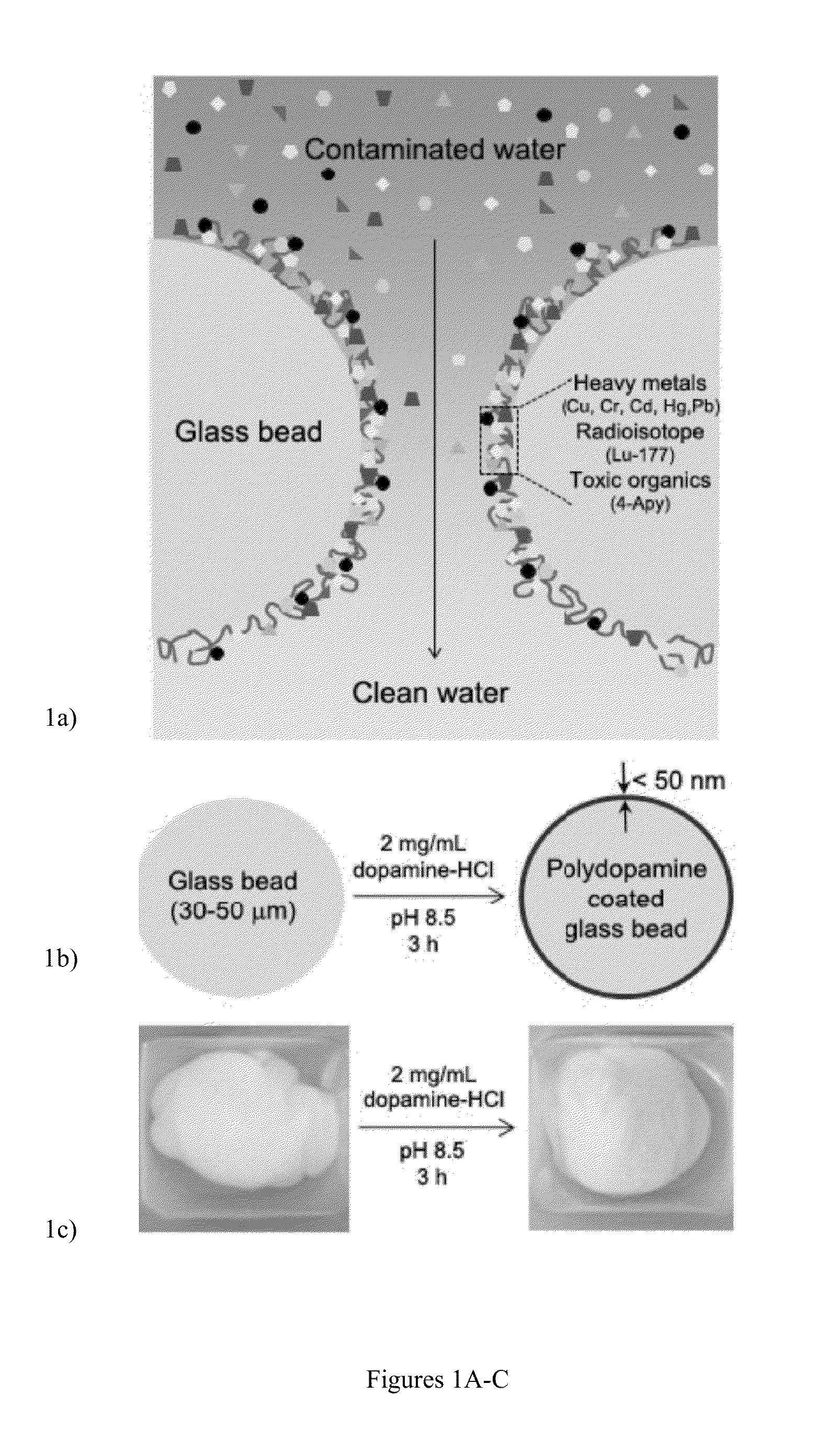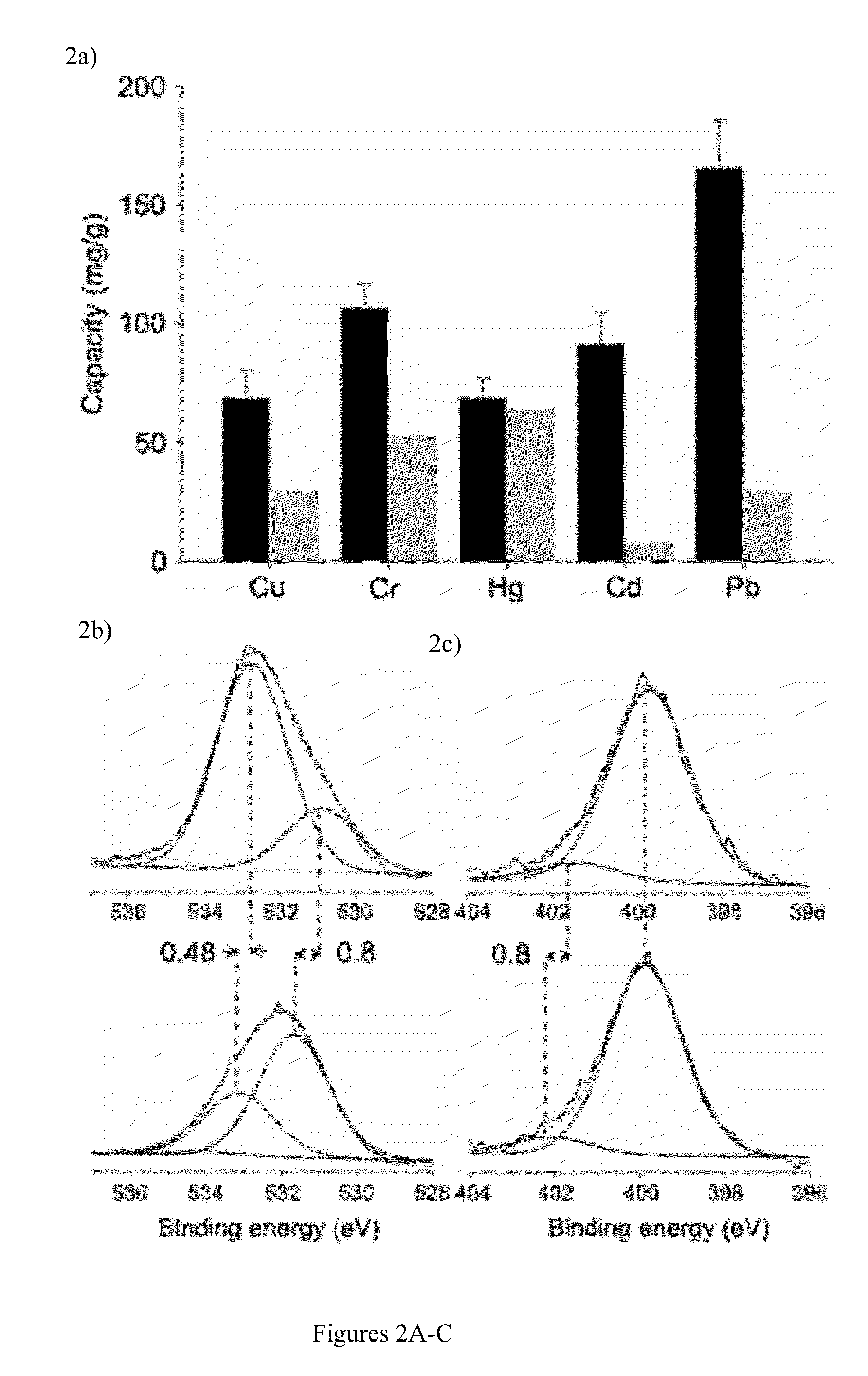Water Detoxification by a Substrate-Bound Catecholamine Adsorbent
- Summary
- Abstract
- Description
- Claims
- Application Information
AI Technical Summary
Benefits of technology
Problems solved by technology
Method used
Image
Examples
Embodiment Construction
I. Introduction
[0030]In the specification and in the claims, the terms “including” and “comprising” are open-ended terms and should be interpreted to mean “including, but not limited to . . . ” These terms encompass the more restrictive terms “consisting essentially of” and “consisting of.”
[0031]As used herein and in the appended claims, the singular forms “a,”“an,” and “the” include plural reference unless the context clearly dictates otherwise. As well, the terms “a”(or “an”), “one or more” and “at least one” can be used interchangeably herein. It is also to be noted that the terms “comprising,”“including,”“characterized by” and “having” can be used interchangeably.
[0032]Unless defined otherwise, all technical and scientific terms used herein have the same meanings as commonly understood by one of ordinary skill in the art to which this invention belongs. All publications and patents specifically mentioned herein are incorporated by reference in their entirety for all purposes, in...
PUM
| Property | Measurement | Unit |
|---|---|---|
| Toxicity | aaaaa | aaaaa |
Abstract
Description
Claims
Application Information
 Login to View More
Login to View More - R&D
- Intellectual Property
- Life Sciences
- Materials
- Tech Scout
- Unparalleled Data Quality
- Higher Quality Content
- 60% Fewer Hallucinations
Browse by: Latest US Patents, China's latest patents, Technical Efficacy Thesaurus, Application Domain, Technology Topic, Popular Technical Reports.
© 2025 PatSnap. All rights reserved.Legal|Privacy policy|Modern Slavery Act Transparency Statement|Sitemap|About US| Contact US: help@patsnap.com



